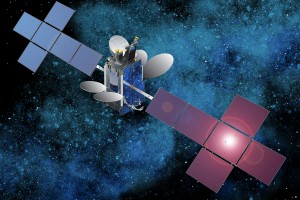
After more than 40 years of operation, DTVE is closing its doors and our website will no longer be updated daily. Thank you for all of your support.
Intelsat looks to African video boom
Intelsat last month signed a new contract with South Africa’s Sentech – the latest deal that has made 68.5° East the hotspot for sub-Saharan Africa. EMEA sales VP Jean-Philippe Gillet explained recent developments to Stuart Thomson.
In September, South Africa’s Sentech extended its contract for DTH and primary distribution capacity with satellite operator Intelsat. Sentech will continue to use Ku-band capacity on the Intelsat 20 craft at 68.5° East to expand its DTH offering and feed digital-terrestrial transmitter sites in Africa.
Sentech will use its capacity to broadcast around 500 channels, including 31 HD services via a single multiplex on the craft.
Jean-Philippe Gillet, vice-president, EMEA sales at Intelsat, citing Euroconsult research that points to average growth of 5.4% annually for the next 10 years, says that the number of channels across Africa is set to expand further, driven in part by an annual growth in TV homes of 4.4% per annum. However, the opportunity is not limited to TV households, with growth in TV consumption likely to be dwarfed by consumption of mobile media. Gillet says that Intelsat currently has relationships with all the major GSM operators. “The market in Africa is also going to be about a lot of video direct to laptop or handheld devices because the penetration of GSM and smartphones is significantly greater than terrestrial TV,” he says. “We really position satellite as a way to [deliver video] whatever the end device.”
Intelsat has a long-term relationship with Sentech, which is using its capacity on Intelsat for both DTH and digital-terrestrial distribution. Digital switchover, long delayed in many countries – not least South Africa – could provide a significant boost for demand.
“Moving from analogue to digital is a massive task even for developed countries,” says Gillet. “You can’t just decide to switch and it happens. It requires you to have all of the components on the customer side, along with the [transmitter] towers. At the the same time, it will happen, even if there is a delay.”
In terms of video generally, Africa is not a single market and the dynamic at play there is very different to other markets such as Kenya or Tanzania – both of which are in turn very different from each other. “Each country has a dynamic linked to the size of the middle class, the state of local infrastructure and regulation,” he says, adding that South Africa stands on its own, with pay TV giant MultiChoice, which is leading a drive towards HD, operating on a different scale to other players.
Gillet says that 68.5° East remains a hotspot for the African market, anchored by MultiChoice’s presence. Intelsat signed a new 15-year deal with the pay TV operator in June, whereby the latter committed to take additional capacity on the forthcoming Intelsat 36 satellite, to be co-located with the existing Intelsat 20 at 68.5° East. The new satellite, which will launch late next year, will include both Ku- and C-band capacity. “The South African market is the largest DTH market in the whole of Africa,” says Gillet. “This is the hottest of all the spots in African in terms of the number of eyeballs it attracts.”
Also for MultiChoice, Intelsat provides pan-African distribution for GOtv, the group’s digital-terrestrial venture in around 11 countries. In South Africa, in addition to MultiChoice’s DStv DTH offering, the company also hosts Sentech’s feeds and the channels of rival player Vision TV on its satellites. “We are active in a number of markets, either with local TV stations or a pay package, and not only the English-speaking markets,” says Gillet.
High-throughput satellites
While South Africa remains an engine of TV growth, Gillet believes other countries will also see increasing activity.
Intelsat is investing in EPIC, its next generation of high-throughput satellites, set to launch from next year, that will be able to deliver enterprise and consumer broadband services as well as specialised broadcasting services across the continent. The first satellite up will be Intelsat 33e, set to launch next year. Gillet says there is considerable interest in this for video ciontribution applications, with broadcasters able to utilise the satellite’s configuration of powerful targeted hotspots covering multiple countries. Using a small amount of capacity to carry a large number of channels destined for digital-terrestrial delivery to the end-user could provide a boon for the operator, enabling broadcasters to use satellite to feed transmitter sites more cost effectively than before. Two other satellites – Intelsat 35e and Intelsat 37e – are expected to be launched in 2017 with capacity over Africa.



